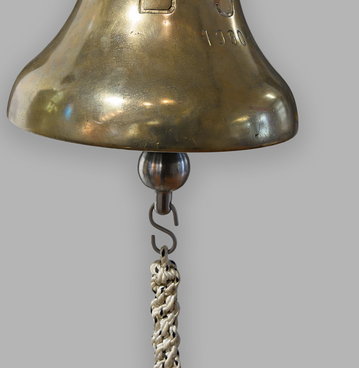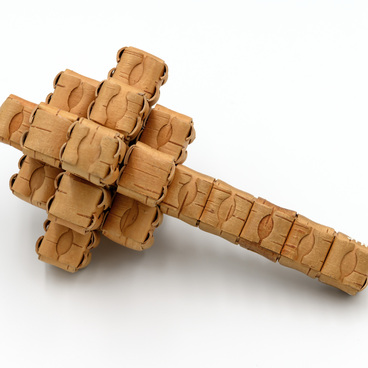The scepter in the shape of a deer’s or elk’s head has become the symbol of the Polyarny Museum of History and Local Lore.
The development of art is particularly characteristic of the early Metal Ages. On the one hand, this is linked with the use of metal tools, and on the other with the people adopting a more stationary lifestyle and improved living conditions. Successful hunting provided a person with uninterrupted access to food, giving free time for arts and crafts.
Slate, soapstone and bone were the main materials from which ancient art was made. The main subject in the art of the ancient Laplanders of this era was the image of an animal, most often elk and deer.
The sculpture is carved from reindeer antlers using flint and metal tools. Despite the fact that the ancient reindeer herders were predominantly fishermen, they could not do without land animals. Fishing alone wasn’t enough to provide the population with all the necessary things. People needed sturdy bones and horns of land animals, their meat to diversify fatty foods from marine animals and on top of that, they needed animal skins for making clothes.
There is no consensus as to which animal is depicted in
the exhibit. The thickened muzzle and the ring at the neck speak in favor of
this being an image of an elk. However, the shape of the horns, the absence of
the characteristic hooked nose of the muzzle and the drooping lower lip
suggests a deer. It is also interesting to note that the angle at which the
head and supposed neck of the animal are connected resembles a kind of “flying”
motion associated with the deer, whereas this angle was usually depicted to be
smaller for the moose which conveys a kind of melancholy feeling. It is
possible that the ancient artist created a mythological, generalized image of
an animal that combined the features of the deer family, which includes both
elk and deer. There is also no consensus on the purpose of this object. It is
known that the petroglyphs of northern Fennoscandia contain images of scepters
with pommels in the shape of an elk’s or deer’s head. Apparently, these animals
had a great cult and ritual significance for ancient people.






